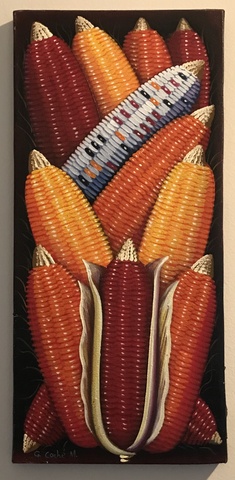
Oil on Canvas, 7 x 15 in.
Bloggers' Private Collection
Gift of Homer Stavely Jr. and Mary Mayshark-Stavely
The English settlers arrived in New England in the early seventeenth century possessed of an ancient set of attitudes about which kinds of bread were more and less desirable. The most desirable kind—indeed, the only kind that was really desirable—was wheat bread. But their longing for breads made exclusively with wheat could only be satisfied in the second quarter of the nineteenth century, after the opening of the Erie Canal made wheat shipped from areas to the west affordable. Before that, in the 18th century, New England was a major importer of wheat, bringing it in from Pennsylvania and other Middle Colonies. This trade, however, was never carried on in sufficient volume to make wheat bread a dietary staple on all levels of New England society. With a short growing season, stony soil, labor for clearing acreage in limited supply, and the depredations caused by a fungus which farmers called "the blast," colonial New England was particularly ill-suited for growing wheat. Read More